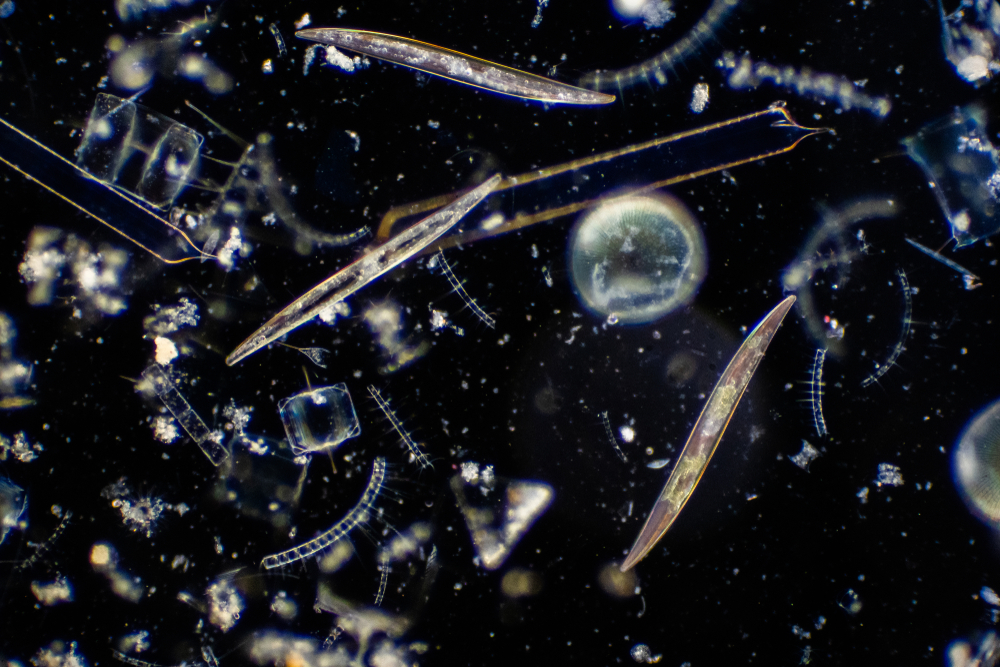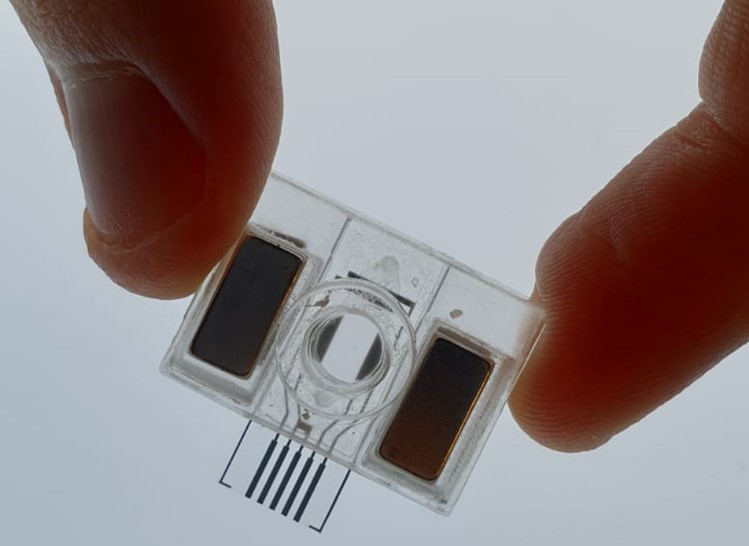
Bioengineered phytoplankton for heavy metal pollution detection
How can bioengineered phytoplankton make water quality monitoring more effective?
Detecting and measuring heavy metals (HMs) in water typically involves lab-based analysis of samples using advanced methods like mass spectrometry and atomic absorption spectrometry. While these methods are accurate, they require costly equipment and trained experts, making them impractical for field monitoring.
In the AquaBiosens project, we harness the intricate genetic programs naturally evolved by phytoplankton and re-engineer them to communicate with handheld electronic devices.
What are diatoms?
Diatoms are single-celled microalgae that have a crucial role in marine ecosystems. They use photosynthesis to capture and store CO2 and produce approximately 20% of the oxygen in our atmosphere. Diatoms are widely distributed with a large number of species, thriving in all aquatic habitats on Earth, and they are among the most relevant members of phytoplankton in the oceans. Their ability to quickly detect and respond to stress is a significant advantage in the highly competitive oceanic environment. Diatoms have evolved efficient mechanisms to sense and respond to environmental changes, such as nutrient scarcity or the presence of pollutants, and they quickly respond with strategies to alleviate the stress.
A naturally evolved heavy metal sensing machinery
These strategies also include the capacity to sense heavy metals in the seawater. Diatoms use sophisticated biological mechanisms to activate a rapid response to heavy metals and other pollutants. These mechanisms are encoded into tightly regulated genetic programs, which are promptly activated when diatoms come in contact with the pollutants, and can be very sensitive. While these mechanisms are still elusive, within the AquaBioSens project FORTH and SDU are jointly researching genes involved in the genetic response to cadmium and nickel exposure.
How can we bioengineer diatoms into biosensors for heavy metal pollution?
The genes that respond to heavy metal stress in diatoms are activated by specific regulatory sequences that are unique to the stress. In the SDU Algae Synthetic Biology Lab, we re-engineer these sequences to turn on genes that produce fluorescent proteins. We then test these modified sequences together in living organisms to see how quickly and how much they can activate the fluorescent proteins in response to the heavy metals in the environment.
Diatoms have evolved to frequently pick up foreign DNA. At SDU, our research group specializes in bioengineering diatoms to give them new biological functions, like producing valuable compounds for commercial and pharmaceutical use or emitting fluorescence in the presence of specific molecules. We use genetic parts such as genes, promoters, and terminators as building blocks, assembling them to create new, complex functions in diatoms. By applying a synthetic biology approach, we engineer diatoms through rapid cycles of design, building, testing, and learning.
This allows us to create diatoms with different genetic configurations that emit varying levels of fluorescent signals when exposed to heavy metals in a test tube. These signals can be easily measured using handheld devices developed by BIOPIX.
Challenges and Considerations
While the bioengineered algae are considered “lab-tools” and will not be deployed into the wild environment outside research facilities and instruments, we are nonetheless developing strategies to avoid the accidental release of bioengineered organisms into the environment. We are encoding the engineered heavy-metal sensing function onto extrachromosomal DNA, which carries an antibiotic resistance gene and will not integrate with the diatom genomes. This way, the artificial DNA can be lost in the absence of artificial selection (i.e. in the ocean), such as a particular antibiotic provided in the seawater. Moreover, we will use and develop strains that are dependent on a particular essential nutrient that is not present in the natural environment.
At SDU, we are investigating the stability and behaviour of engineered diatoms in several scenarios of hypothetical accidental environmental release.
Our innovation
The AquaBioSens project aims at significant advancements in environmental monitoring through the innovative use of bioengineered phytoplankton. By tapping into the natural sensitivity of diatoms to pollutants and enhancing it with synthetic biology, we are developing efficient and precise tools for detecting heavy metal contamination in aquatic environments.






